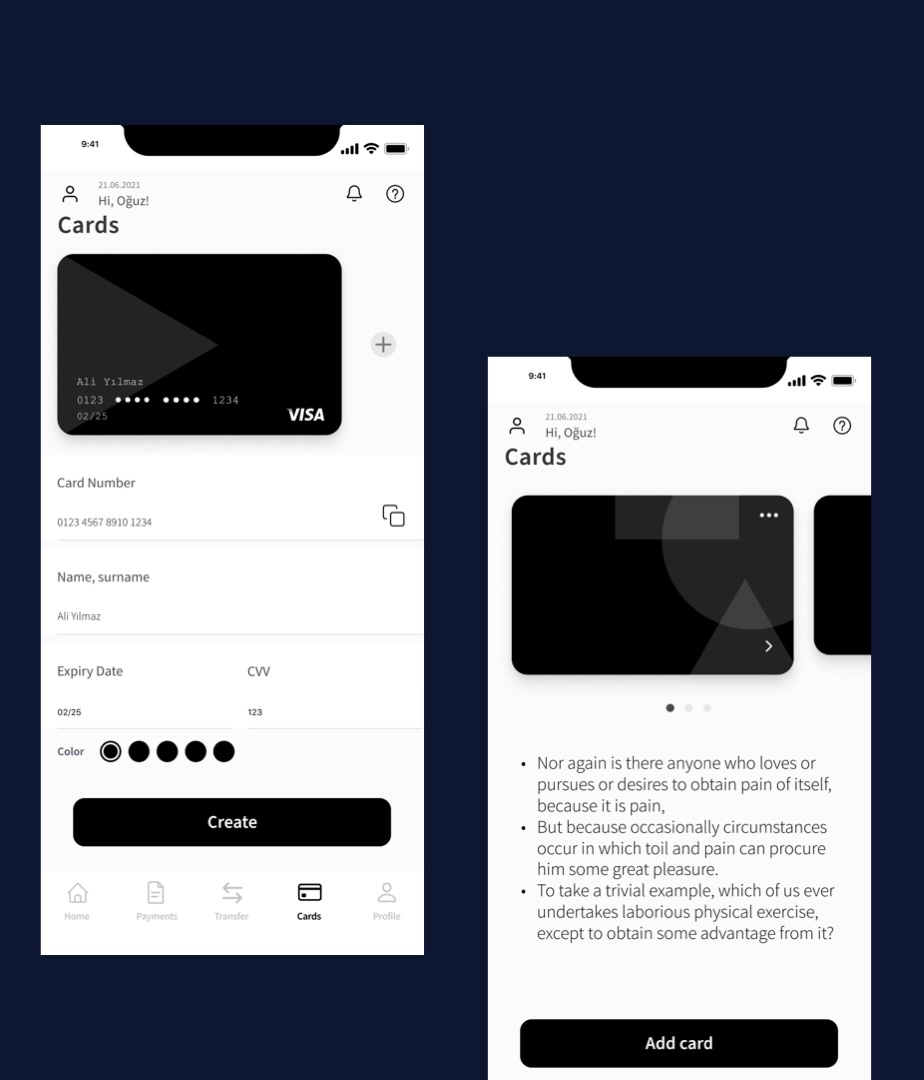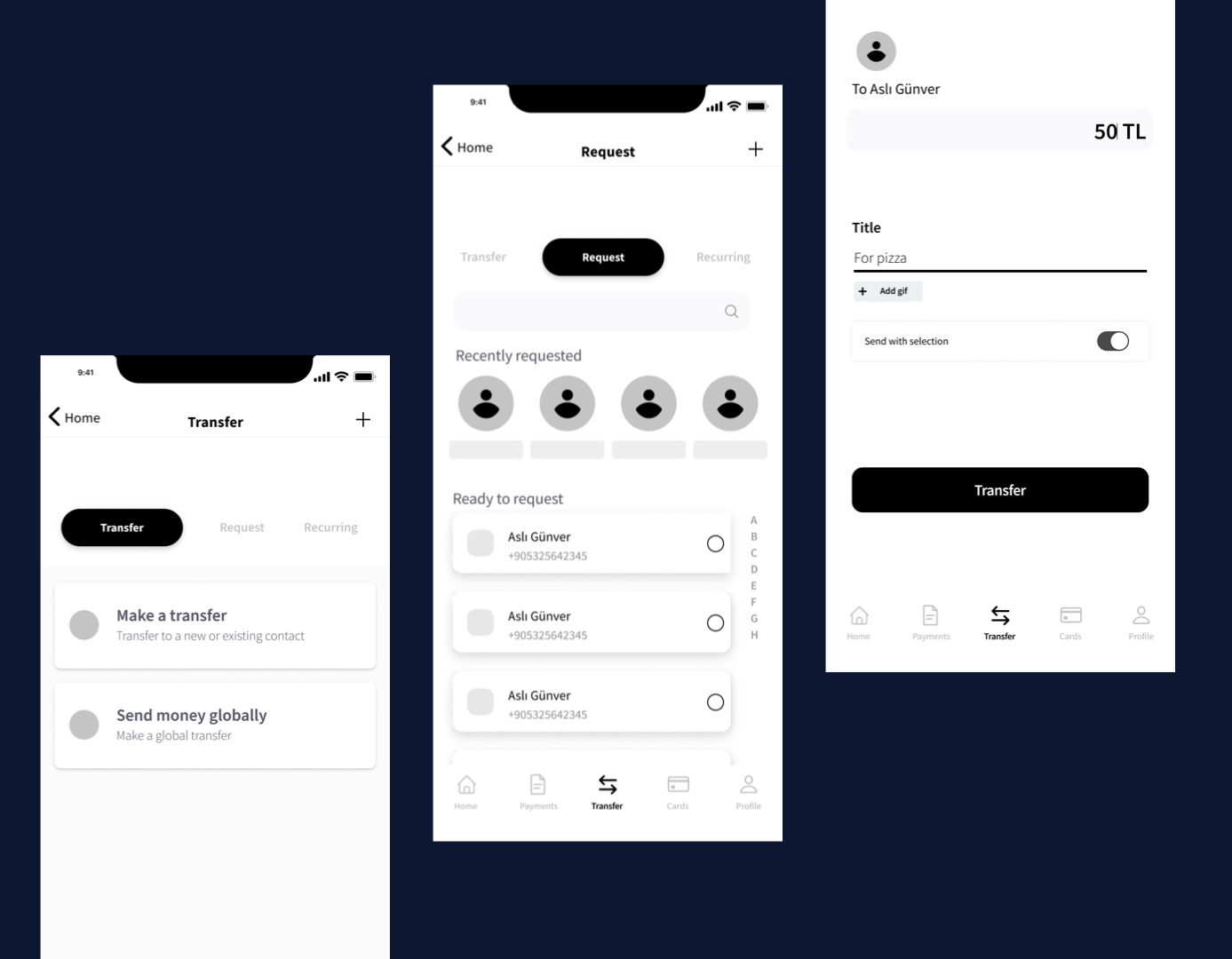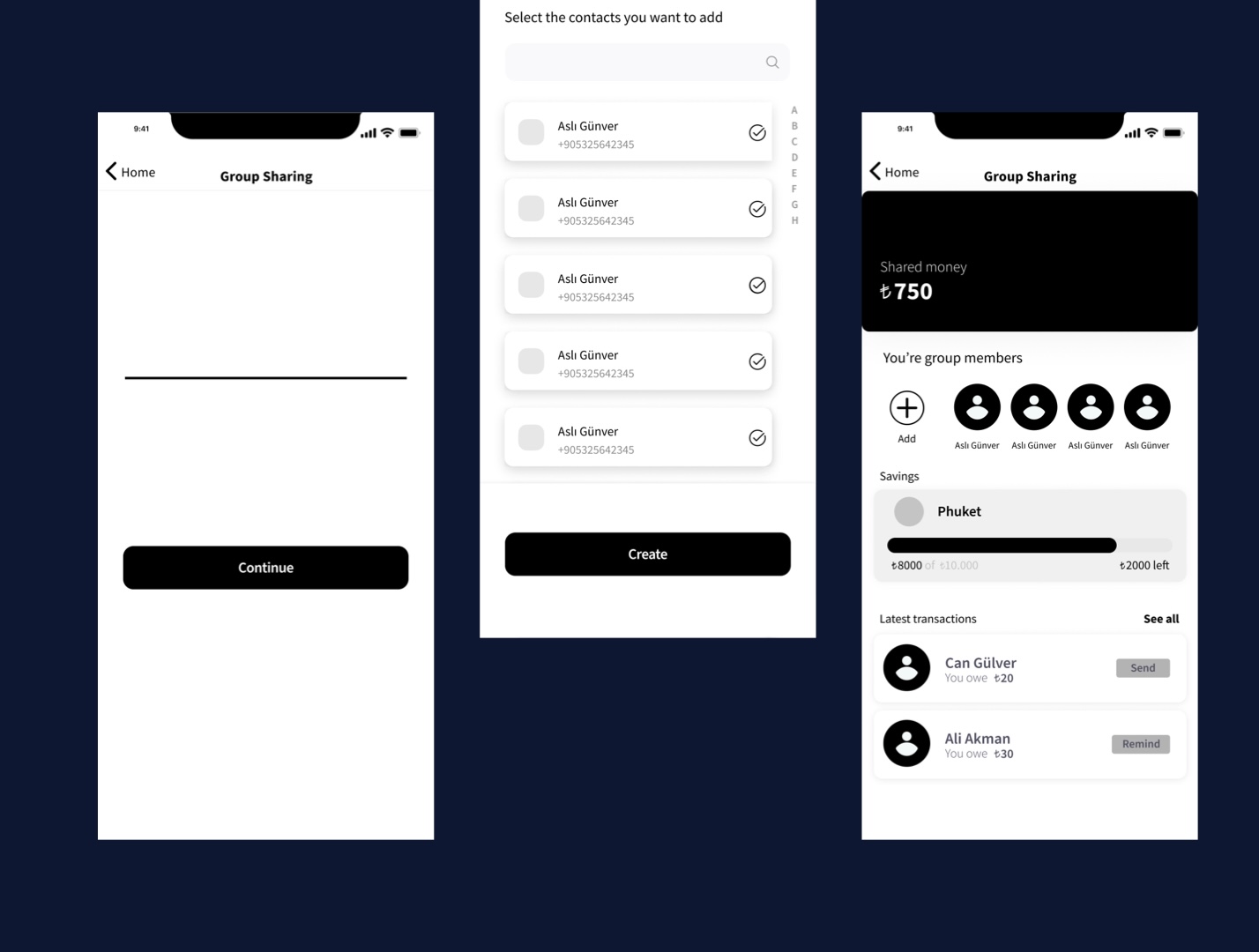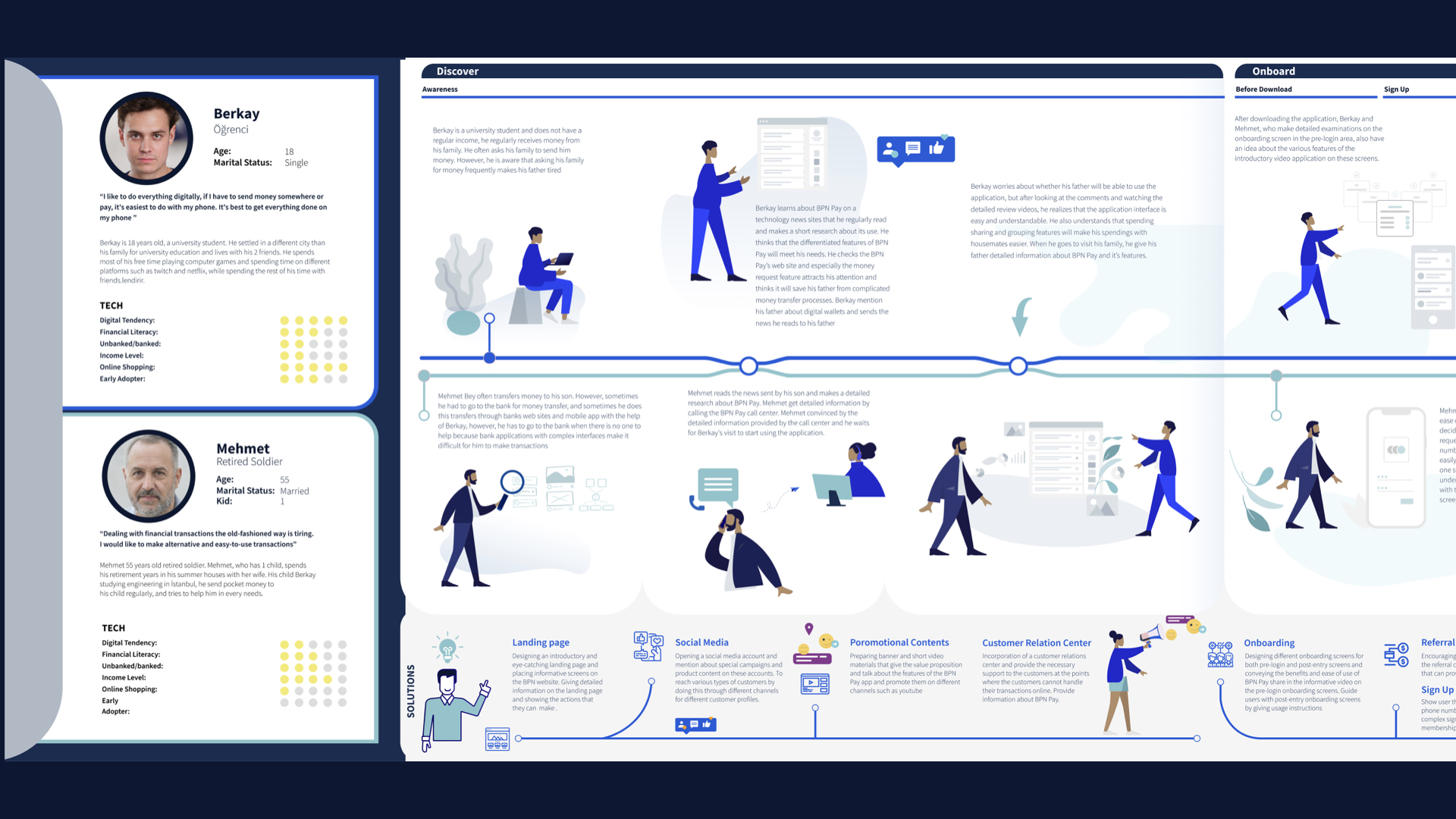
Strategic Experience Design for a Fintech Wallet Ecosystem
This project focused on helping BPN, a Western Union partner in Turkey — explore opportunities to expand into the digital wallet and fintech space. The challenge was to understand how BPN’s existing physical branch network and customer base could evolve into a hybrid service model offering digital financial tools. As the sole UX and service designer on a multi-disciplinary team, I led the research and experience design track, working closely with strategy consultants. The project followed a three-phase process: Discover, Define, and Develop.
![image of a digital marketing campaign design [interface]](https://cdn.prod.website-files.com/6856734bb51eba837adcbfe6/686a56cdb9c3de98454b48dc_Personas.png)
![<subject>[interface] image of a screenshot of a learning module (for an edtech)</subject>](https://cdn.prod.website-files.com/6856734bb51eba837adcbfe6/686a6d2fbf2aa883473ea626_BPN%20Workshop%20Outputs.001.jpeg)
![[interface] image of software interface (for a edtech)](https://cdn.prod.website-files.com/6856734bb51eba837adcbfe6/686a7239c6a95c70145053a8_BPN%20Workshop%20-%20Prio..001.jpeg)
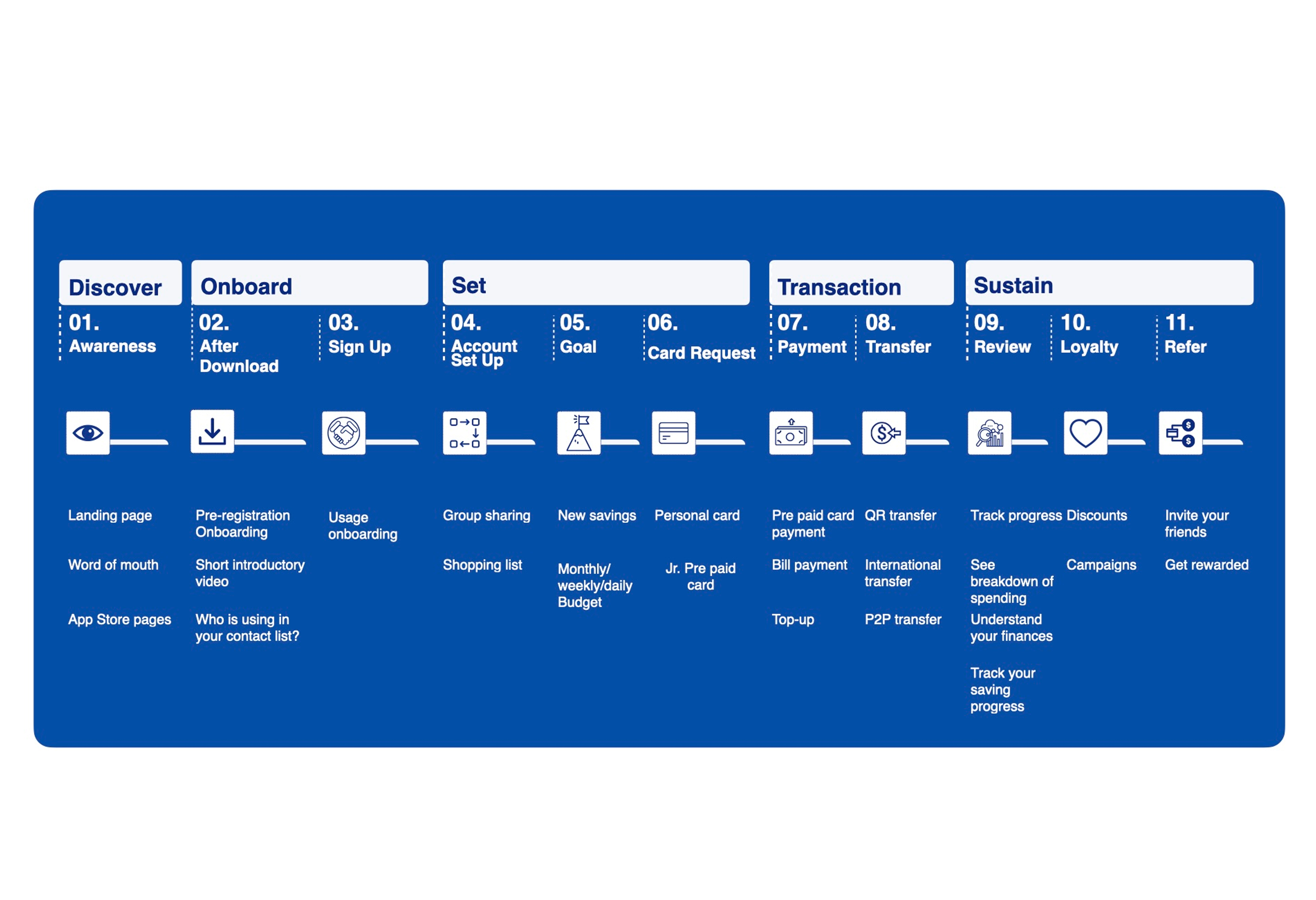
![image of a customer service representative working in a digital interface environment [digital project]](https://cdn.prod.website-files.com/6856734bb51eba837adcbfe6/686a77d93228e041085242b9_Journey%20Maps.002.jpeg)
![image of sustainable product implementation [digital project]](https://cdn.prod.website-files.com/6856734bb51eba837adcbfe6/686a7987ea710608bee29ce2_Wireframes.002.jpeg)
